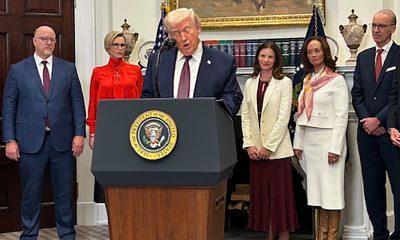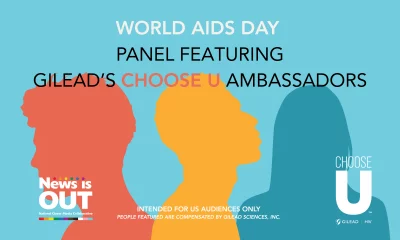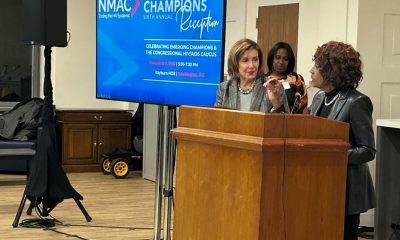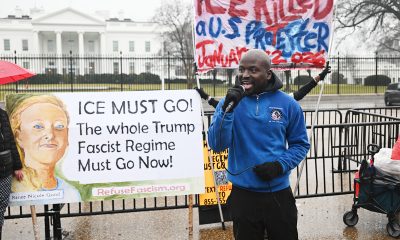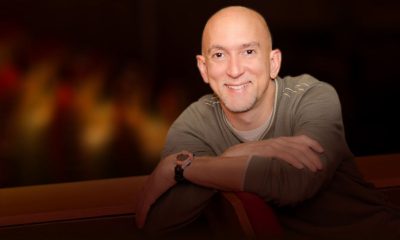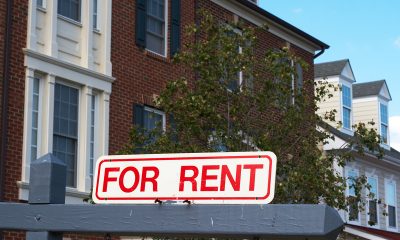Health
Learning the hard way
Local out black poz men band together to spread testing message
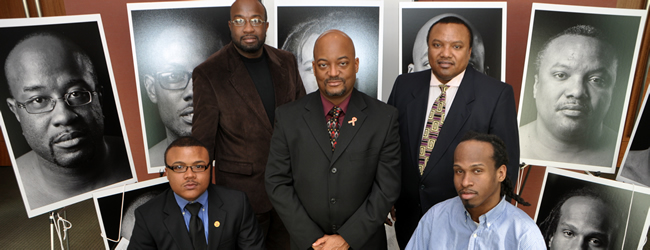

Seated from left are Venton Jones and Tori Smith. In back from left are Paul Gordon, Rodney McCoy Jr. and Samuel Hairston. (Blade photo by Michael Key)
The statistics are grim. The task is daunting.
In the D.C. area, of the estimated 16,500 people living with HIV/AIDS, 40 percent — or more than 6,700 people — who were infected with the virus were men having sex with men. The majority of these men — 60 percent, or nearly 4,100 — are black. Data, from 2010 suggests that of those, 40 percent were unaware of their HIV status before being tested.
Those scary statistics are constantly on the mind of Venton Jones, 27, who recently came to the nation’s capital from Texas where he was born and educated, earning a degree in community health and a master’s in health care administration.
But Jones’ real credentials about AIDS are different, giving him the “street cred” about HIV, credibility he wishes he never earned. In June 2007, Jones was diagnosed as HIV positive when he was going through a standard set of medical tests as he was seeking enlistment in the U.S. Army.
“It happened with someone I was sleeping with” that spring, says Jones, “at a time in my youth when I was wild, to say the least.”
He thought, “How could this happen to me?” He reviewed all he had going in his life: “I am educated; I have a degree in health; I should have known better.”
But Jones says, “there was a lot going on” in his life then, adding that he was dealing with “issues like coming out, and also what to do next” with his life, with what he calls “finding a purpose.” He says he “wasn’t necessarily on the ‘down-low,'” a term often used among black men to describe themselves as living life on the surface as “straight” but actually secretly having sex with men. He says a few of his friends already knew he was gay.
“If you asked me, I would tell you, but not too many people asked.”
In the spring of 2007 he came out to his parents.
Jones says he had regularly been tested and had always seen the results come back as negative for the virus. So he got cocky about it, basically feeling so-far-so-good. So he had unprotected sex. Now he knows better.
As a result, filling the giant vacuum of the “absence of strategies to reach young people, specially young black gay men, like the people I grew up with,” Jones says is his top priority today, as he gets ready to hit the streets to spread the message that testing for HIV is a crucial step to checkmate the renewed AIDS epidemic in the D.C. area.
On antiretroviral medication today, the virus in his body is, Jones says, “now undetectable,” and he says proudly that “now I am in the best physical and mental health I have been in my entire life.” But of course he knows the virus still lurks, waiting to pounce and begin to spread again, high-jacking other cells, especially white blood cells, eventually dooming his body’s immune system, if given the chance.
However Jones is doing more than fight HIV in his own body. He is now one of eight gay black men, all diagnosed as HIV positive, who are “HIV testing advocates” now finishing training under the auspices of the Bayard Rustin Mobilization Project, an outreach program aimed at raising HIV awareness among gay black males in D.C., funded by a grant from the federal government and directed by the national nonprofit advocacy group, the National Association of People With AIDS (NAPWA), in partnership with local groups like The D.C. Center for the LGBT Community.
Jones, who also works as a senior program associate in communications for the D.C.-based National Black Gay Men’s Advocacy Coalition, will tackle the role of being an advocate on his own time, away from his day job. And for that task, he says, “a big focus has been on reaching youth.
Jones has a lot in common with his fellow advocates. Like Samuel Hairston, a 44-year-old preacher with a passion for spreading the “good news,” ordained in 1996 as a full-time Pentecostal minister, currently living in D.C. but pastoring on weekends in Baltimore at the Church of the Everlasting Kingdom, with a congregation of about 50, he says, most of whom are not LGBT, and who all know that he is both gay and HIV positive.
Then a full-time Montgomery County firefighter, in 2005 Hairston learned he was positive when, he says, after years living life on the “down-low,” a “routine medical exam in his blood work prompted an HIV test, and I came up positive.”
He was “devastated,” he admits, not only for himself, but also because he had to go home and tell his “faithful and loving” wife that he had contracted HIV “and that I could possibly have infected her.” He says that “thankfully, that was not the case,” and she remains negative today. “The marriage was already on the rocks,” he says, and it did not survive. His children, then a 9-year-old son and a 6-year-old daughter, took their parents’ divorce hard, though they survived it, and they did not learn until later that their father was infected.
“As I child,” he says, “I always felt an attraction to men and other boys, but there was no one I could trust to talk to.” His introduction to sex came when he was molested at age 5. He learned “at an early age,” he confides, “to keep secrets and hide my feelings.”
Later he convinced himself that through his early ordination in the ministry, at first when he was 14, he “would change my homosexuality,” but by age 15, he says he was “jumping in and out of cars and finding ways to feed my sexual appetite,” which felt “insatiable” to him. He calls himself a recovering sex addict. And though he preached a Christian message, he says, “I never believed (God) really loved me because I was gay.”
As the marriage was cracking apart and with the diagnosis of AIDS, his world was falling in on him. “I went into a spiral of serious depression” and he says he wound up meeting a man, “the first man to give me some attention” of the type he sought. They had sex and did cocaine.
“Drugs became my outlet,” Hairston says, as he sought “some release from the guilt and shame of living in the closet and the ‘down-low’ lifestyle, and the pain it caused my family.”
“Today I live life out in the open,” he says. “I’ve left the ‘down-low’ behind, because it’s so dishonest. The truth is liberating, and even as Jesus said, ‘The truth shall set you free.'” Today, Hairston says, thanks to regular devotion to a 12-step program, he’s “clean” of drugs and “celebrating two-and-a-half years of sobriety.”
One of his biggest life missions now “is to reach out to African-American men, who are on the down low, and to say that there’s a better life, to help them to embrace honesty,” the same transparency he has come to himself. As for himself, he says he has “reconciled” his sexuality with his spirituality. His target audience will be among those attending the black church, which traditionally has fostered homophobia rather than acceptance.
Meanwhile, another advocate, Tyranny “Tori” Smith, 30, will focus his outreach efforts differently — to those who inhabit what he calls the “vogue-fem” subculture: gay and transgender men and women who stylize their lives with makeup, hairdos, costumes and dancing. This is the “sweet” world of “ballroom” culture, and the “houses of families formed by choice, not birth that grow up within the world of urban, predominantly black “ballroom,” or fashion runway, competitions.
Raised in Oxon Hill, Md., Smith came out at age 14 and soon was a regular at the clubs like Tracks.
“I told my mother,” he says, that he was gay, “and once I told her, there was no one else to hide it from.” Now a resident of NE D.C., Smith is a member of the “House of Herrera,” named for famed Venezuelan-born American fashion designer Carolina Herrera. It’s his second “house.” He joined his first when 16 but five years ago switched to Herrera, which currently has about six members in D.C. and around 300 nationwide, five years ago. “In my house,” he says, “they’re my family.”
Smith discovered he was positive in June 2010, when he came down with summer pneumonia and was tested positive when given an HIV exam.
“I was surprised,” he says, “because I had been with someone for three years, and we had both tested negative at the beginning.” But with the benefit of hindsight, it was his partner (who later died, though not of AIDS) who infected him.
Now as an advocate for regular testing, Smith says that “my whole purpose is to reach people, like in the ‘ballroom’ culture, that the Health Department is not reaching — that’s my audience. Basically, we’re trying to put a face to HIV, our face, that’s our whole mission. And when I talk to people, my motto is this: ‘knowing is to live, not knowing is to die.’ So basically I tell them, ‘get tested.'”
Two other Rustin Mobilization Project testing advocates are Paul Gordon, 40, born in Portsmouth, Va., and Rodney McCoy, Jr., 43, born in Brooklyn, N.Y. Both men now live in the D.C. area.
Gordon, who felt he was gay from age 5 on, was molested at age 14, raped at gunpoint and “with a knife at my neck” by someone he calls his father’s “best friend.” The assailant was eventually arrested and convicted and served eight years of a 20 year prison sentence. Gordon, who then began to have sex with boys his own age, came out when he was about 18. His HIV status was diagnosed positive in 1989, contracted from a partner, a decade older, with whom he moved to Atlanta at age 20 after graduating from Hampton University in coastal Virginia. Gordon never knew his partner, who eventually died after their three-eyar relationship, was positive
“I was just trusting,” he says.
When he learned he was infected, Gordon remembers that “I went to a place of denial. Regardless of what the doctor said, I didn’t believe it.”
McCoy, in the field of HIV prevention for 16 years and now an outreach advocate as well as a manager of the Mobilization Project program, was diagnosed HIV positive in 2002, when he was so weak with the flu that someone urged him to get tested.
“I really didn’t expect to be positive,” he says. “I had risky behaviors before but I had always tested negative. I felt I was just managing my risks well enough.” When dating one person, for only a month, the man insisted he was negative, and looking back, McCoy says, “To this day, I’m sure now that he didn’t tell me the truth.”
For McCoy, it comes down to this: “We often say ‘use condoms every time,’ but often we simply don’t acknowledge that love, trust and pleasure trump knowledge and information every time. And you can say this, I found out the hard way.”
“Self-determination” is the watchword of the Bayard Rustin project and its sponsoring organization, NAPWA, whose president Frank Oldham, Jr. says that “While the epidemic impacts us directly, we also impact the epidemic by identifying ways to reduce its new infections, mitigate its stigma and alleviate its suffering.”
It was NAPWA, which advocates for 1.3 million Americans living with AIDS, that created the annual event of National HIV Testing Day.
The Rustin project is simply one more step in the proverbial journey of a thousand miles, until the disease can be cured and even prevented. In the meantime, Oldham says, “we help individuals living with HIV learn how to tell their stories. We’re taking the fight to the streets,” with advocates who are HIV positive, one man reaching out to another man, one step at a time.
Health
Choose U ambassadors share lived experiences with HIV, personal reflections, and insights
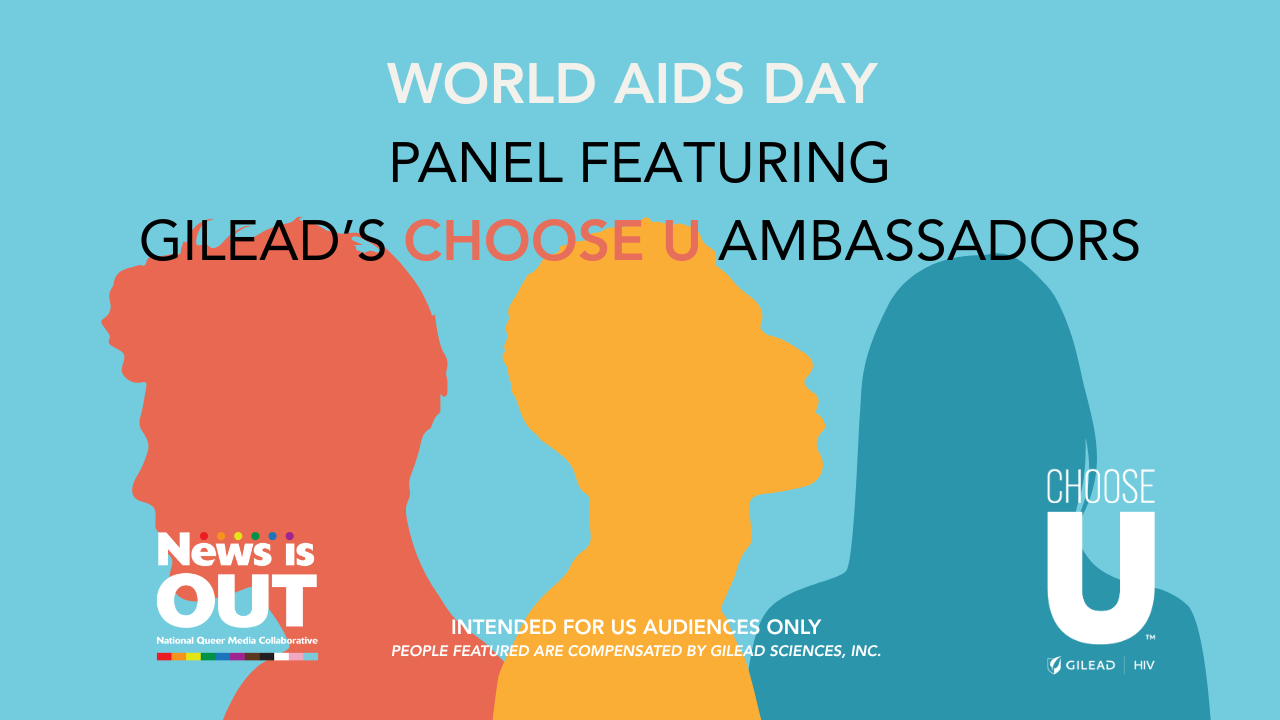
The Choose U World AIDS Day panel brought together three longtime advocates living with HIV to talk about care, stigma, and what living with HIV over the long-term means to them. The conversation featured Jahlove Serrano, Joyce Belton, and Andrew Nichols, who have each lived with HIV for more than 20 years. News is Out hosted the event in partnership with Gilead Sciences.
“Co-created with community representatives from around the world, Choose U is comprised of inspiring examples of how the outlook for aging with HIV has dramatically changed,” Gilead shared in the recent launch of the program. “By focusing on the real-world experiences of people in different circumstances, Choose U spotlights individuals prioritizing starting and staying on HIV treatment, self-care, and overall strategies to help them lead healthier lives.”
The Choose U ambassadors opened with a clear message: Lived experience drives understanding.
Each panelist talked through the decisions, relationships, and periods of uncertainty that shaped their HIV care. They also described their approaches to HIV treatment and adherence, including the importance of staying on treatment to help lower the risk of HIV drug resistance. They reflected on the shifts they have seen in HIV treatment over the decades, the value of honest conversations with providers, and how staying engaged in care and on HIV treatment helped them lead longer, healthier lives.
The panel discussed U=U, which stands for “Undetectable equals Untransmittable.” Undetectable means there is so little virus in the blood that a lab test can’t measure it. Research shows that taking HIV treatment as prescribed, and getting to and staying undetectable, prevents HIV from spreading through sex.
The panelists also spoke about the emotional side of living with HIV over the long-term and the stigma they have faced. Joyce described a personal moment when her pastor visited her in the hospital and how that experience began her work educating her church community about HIV.
Jahlove talked about how his biological family reacted to his diagnosis. “When I disclosed my status, they told me that I put a shame on the family,” said Jahlove. When he shared his status with his peers, they responded with support, which gave him a sense of empowerment.
Andrew, a professional therapist, described how he has experienced stigma in dating and in his workplace, and why he turns to therapy for guidance. “Therapy has really helped me rebuild my confidence and realize my self-worth has to come from me,” said Andrew. “Then after that, I can help with the greater community.”
The panel closed with a message for others living with HIV: They encouraged viewers to start and stay engaged in HIV treatment and care, ask questions, and rely on supportive networks. Their stories show how starting and staying on treatment over the long-term, community, and affirmation can shape well-being.
A recording of the full 30-minute event is now available on YouTube, which you can access here.
Health
The harsh truth about HIV phobia in gay dating
HIV and stigma remain baked into queer dating culture
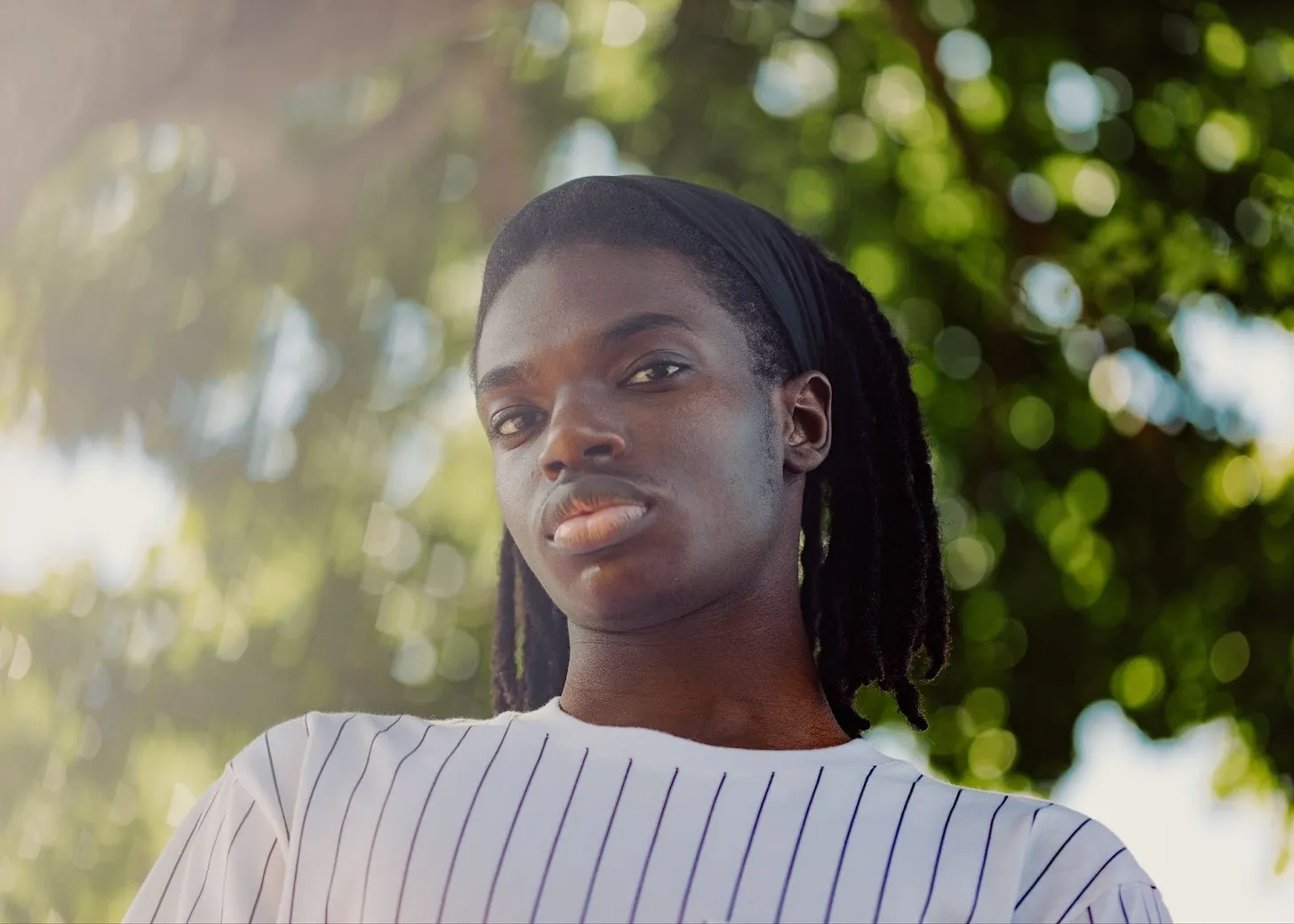
Uncloseted Media published this article on Dec. 9.
This story was produced with the support of MISTR, a telehealth platform offering free online access to PrEP, DoxyPEP, STI testing, Hepatitis C testing and treatment and long-term HIV care across the U.S. MISTR did not have any editorial input into the content of this story.
By SAM DONNDELINGER | In his room, 19-year-old Cody Nester toggles between Grindr profiles on his phone.
As he senses chemistry with a match, he knows he has to flag something that could be a deal breaker.
“Did you see on my profile that I’m HIV positive?” he writes.
The reply arrives instantly.
“You’re disgusting. I don’t know why you’re on here.” Seconds later, the profile disappears, suggesting Nester is blocked.
“He went out of his way to say that. People could at least be more aware, ask questions, and understand the reality [of living with HIV] instead of attacking us,” Nester told Uncloseted Media.
“I would say 95 percent of people respond that way,” says Nester, who lives in Hollywood, Fla., and works at a Mexican restaurant. “The entire conversation is going fine. They’re down to meet up and then right when I mention [HIV], it’s always, ‘Oh no, never mind.’”
Some other messages he’s received include:
“You’ll never get anything in your life.”
“Why don’t you die?”
“Why are you on here?”
More often, it’s silence, a cold “No” or a sudden block.
“It’s like you’re a white fish in a school of black fish,” he says. “You’re immediately the odd one out.”
Even though Nester’s undetectable status makes it impossible for him to transmit HIV to partners during sex, he experiences stigma around HIV, something which nearly 90 percent of Americans agree still exists, according to a 2022 GLAAD report. And a survey shared in 2019 found that 64 percent of respondents would feel uncomfortable having sex with someone living with HIV, even on effective treatment. The emotional cost of this stigma is a significant barrier to intimacy and can result in a loss of self-esteem, fear of disclosure and suicidal thoughts.
What the science says — and why it doesn’t seem to matter
“The fear comes from antiquated ideas around HIV,” says Xavier A. Erguera, senior clinical research coordinator at University of California, San Francisco,’s Division of HIV, Infectious Diseases & Global Medicine. “A lot of people who are newly diagnosed still fear it’s a death sentence. Even though we have medications now to treat it effectively, and it’s basically a chronic condition, people haven’t caught up.”
Since 1996, antiretroviral therapies have developed to where they can suppress the virus to levels so low that it is undetectable in the blood, and thus not able to be transmitted to sexual partners. This is known as Undetectable = Untransmittable, or U=U. According to a Centers for Disease Control and Prevention report from 2024, 65 percent of HIV-positive cases are virally suppressed.
Another line of defense is pre-exposure prophylaxis (PrEP), which reduces the risk of acquiring HIV from sexual intercourse by roughly 99 percent when taken as prescribed. Approved by the Food and Drug Administration in 2012, the medication launched as a once-a-day pill and was hailed as a breakthrough as it transformed the sex lives of gay men, which had been shaped by decades of fear about HIV complications and about where AIDS came from.
“Internal logic doesn’t reflect what we know scientifically,” says Kim Koester, associate professor in the Department of Medicine at UCSF. “I was very optimistic when PrEP came out. The drug works, so why wouldn’t everyone use it?”
Even with PrEP use on the rise, less than 600,000 Americans used it in 2024, and Koester says skepticism and judgments about taking the drug persist.
“The phobia is pervasive,” Koester told Uncloseted Media. “People believe that others get the disease because of their lifestyle. … PrEP was supposed to be the antidote to the threat of HIV, reduce the anxiety, and make you more open to who you are and the sex you want. It’s supposed to be liberating. It is part of the answer. But it’s not enough. We don’t have enough people using PrEP for it to make the dent in the stigma we need.”
According to a 2023 study of seven informants living with HIV, public stigma stems from problematic views from society that those living with HIV are “a dangerous transmission source,” “disgraceful” and “violators of social and religious norms who have committed deviant behavior.”
Laramie Smith, assistant professor of Global Public Health at the University of California, San Diego, says this stigma is unwarranted and fueled by misunderstanding:
“With today’s treatments, it shouldn’t be a life-altering identity shift. It should be no different than, ‘I have diabetes.’ If you’re virally suppressed, it shouldn’t matter whether you’re friends with someone, whether you’re sleeping with someone — the science shows us that.”
How HIV phobia shows up online
Nester, who contracted HIV last year from a Grindr hook-up who insisted he was negative, says he is just starting to accept his diagnosis. “I didn’t go back on the apps for a long time after that. It messed with my mental health … realizing I’d have to take medication for the rest of my life.”
Since he started dating again this year, returning to apps like Grindr and Sniffies, he has faced a new normal. He tries to do everything “right” and disclose his status early. Even on his Grindr profile, he identifies as “poz,” slang for HIV-positive.
Still, he says most people ghost him once they find out. “The second I bring it up, it’s ‘No,’” says Nester. “The amount of discrimination you get … it’s always the same pattern. … People don’t know, and they don’t want to know. It messes with you.”
This discrimination may be fueled by a deprioritization of HIV awareness programs across the country. Earlier this month, the U.S. State Department did not commemorate World AIDS Day for the first time in 37 years. HIV prevention programs have been slashed, especially in conservative districts, and only 25 states and D.C. require both HIV and sex education. In many states, health curricula often lag behind current science and omit teaching about PrEP, gay sex and concepts like U=U. Research shows that Gen Z is currently the least educated generation about HIV.
“I could go all day explaining HIV, but people don’t want to listen,” says Nester, who is part of Gen Z. “People don’t want to learn about it; they just want to avoid it.”
HIV anxiety and public stigma shaped by history
Even in more progressive areas, stigma still exists. Damian Jack, a 45-year-old from Brooklyn, remembers sitting in an exam room in 2009 as a doctor explained how low his T-cell count was, which is a hallmark of HIV infection.
“I started hysterically crying,” he told Uncloseted Media. “HIV meant death. That’s what I thought.”
In 1981, when Jack was 1 year old, the first reports of a mysterious and deadly immune deficiency syndrome, which would later be named AIDS, appeared in the U.S. Growing up, Jack saw countless terrifying images of men on their deathbeds with Kaposi sarcoma, the purple lesions the media once called “gay cancer.” Public misinformation and fearmongering spread ideas that AIDS was a disease that “only gay men and drug users get.” And politicians often equated it with homosexuality and moral failure, calling it a “gay plague.” It wasn’t until September 1985, four years after the crisis began and thousands had died, that President Ronald Reagan first publicly mentioned AIDS.
Decades later, the emotional residue of that era and the shame associated with the virus lingers.
Hours after learning of his diagnosis, Jack faced his first encounter with rejection. He already had a date planned that night, and his doctor and friends encouraged him to go.
They had a great time until the date asked him: “Are you negative or positive?”
He told the truth.
“It was just understood there wouldn’t be a second date,” says Jack. “I remember thinking, ‘This is how dating is going to be now.’ I felt so anxious telling guys. It followed me everywhere. I don’t think that anxiety ever truly goes away.”
The emotional impact of HIV stigma
For those who are HIV-negative, experts say that “stigma’s whole design is to ‘other.’”
“The ‘us versus them’ creates that false sense of safety when it comes to HIV,” says Smith. “If I can believe that someone did something to deserve their diagnosis, and I’m not that [kind of person], then I’m safe.”
This othering is painful and can lead to shame, fear and isolation, and it is linked to a higher risk of depression and anxiety.
“If I’m undesirable, and that’s what those messages are communicating, that threatens your sense of safety, your sense of belonging and the fundamental desire we all have to be loved,” Smith says. “And that starts to reinforce the thinking that ‘I am not worthy. This virus that I have means that I’m not lovable. I am not safe showing up among other men.’”
“I pretend it doesn’t hurt, but some things do sting a little bit,” Nester says. “You start thinking, ‘Am I really that disgusting? Am I really that singled out?’”
When public stigma turns inward
“Internalized stigma is what occurs when applying the stereotypes about who gets HIV, the prejudice, the negative feelings, onto yourself,” says Smith.
In 2024, 38 percent of people living with HIV reported internalized stigma. And studies show that it can predict hopelessness and lower quality of life, even when people are engaged in care or virally suppressed.
Internalized stigma can also affect how people practice safe sex and communicate about the virus. A 2019 survey of men who have sex with men found that individuals who perceived greater community-level stigma were less likely to be aware of — and use — safer-sex functions available on dating apps, such as HIV-status disclosure fields, as well as sexual health information and resources.
“[HIV phobia] is probably the most intense, subvert bigotry I think you could experience,” Joseph Monroe Jr., a 48-year-old living in the Bronx, told Uncloseted Media.
On dating apps, men have messaged him things like, “You look like you’ve got that thing” and “Go ahead and infect someone else.”
Monroe has also dealt with misinformed people who rudely opine about how he contracted the virus: “Who fucked you? That’s how you got it, right?” people will say to him.
“You end up internalizing all these stereotypes about who gets HIV — that you were promiscuous, that you didn’t care about yourself, that you did something wrong,” says Smith. “You carry that in, and then you have to relearn: ‘No, I didn’t. This is just a health condition.’”
What HIV acceptance looks like and raising awareness
For those living with HIV, acceptance feels far away.
“You’re living under this threat of HIV and the threat that others find you threatening. It inhabits you socially and sexually,” Koester says. “People are hunkering down. Not putting themselves out there and having a mediocre quality of life. To have a sense of empowerment, you have to be legitimate and seen in the world and it’s hard to do that with the stigma that exists.”
Researchers say the path forward lies as much in conversation as in medicine.
Koester says she talks about HIV and PrEP anywhere she can, including in salons, cafes and restaurants. “Whenever I get into a cab with someone, I’m going to bring up HIV so the driver gets accustomed to hearing about it. … We have a long way to go in terms of exposure and awareness and every little bit helps.”
Part of this lies in increasing awareness through targeted marketing campaigns. PrEP is still profoundly misunderstood outside major urban centers, with uneven uptake among minority groups and usage gaps in the Bible Belt. And a 2022 U.S. survey found that 54.5 percent of people living with HIV didn’t know what U=U meant, and less than half of Americans agree that people living with HIV who are on proper medications cannot transmit the virus.
While eradicating stigma is slow, there is hope for acceptance.
Years after Jack’s diagnosis, in 2021, he told a man he was on a third date with that he was HIV-positive but undetectable. His date’s reply was almost casual:
“Oh — is that it? I thought you were going to say you had a boyfriend or something. I’m on PrEP. You’re fine.”
“It felt so good to hear him say that and accept me,” says Jack. “I was like, ‘This is my person. You’re my person.’” One year later, they got married.
Back in Florida, 19-year-old Cody Nester isn’t feeling this acceptance. He still scrolls past profiles that read “Only negative guys” and tries to ignore the hateful messages.
“It still hurts, but I know it’s coming from fear,” he says. “I wasn’t too informed about HIV before I got it. … When I got it, I really jumped into the rabbit hole and began to learn. I really do think [HIV and stigma] is because people are not knowledgeable. … When people don’t know details, they tend to get scared.”
Additional reporting by Nandika Chatterjee.
Health
Developing countries to receive breakthrough HIV prevention drug at low cost
Announcement coincided with UN General Assembly
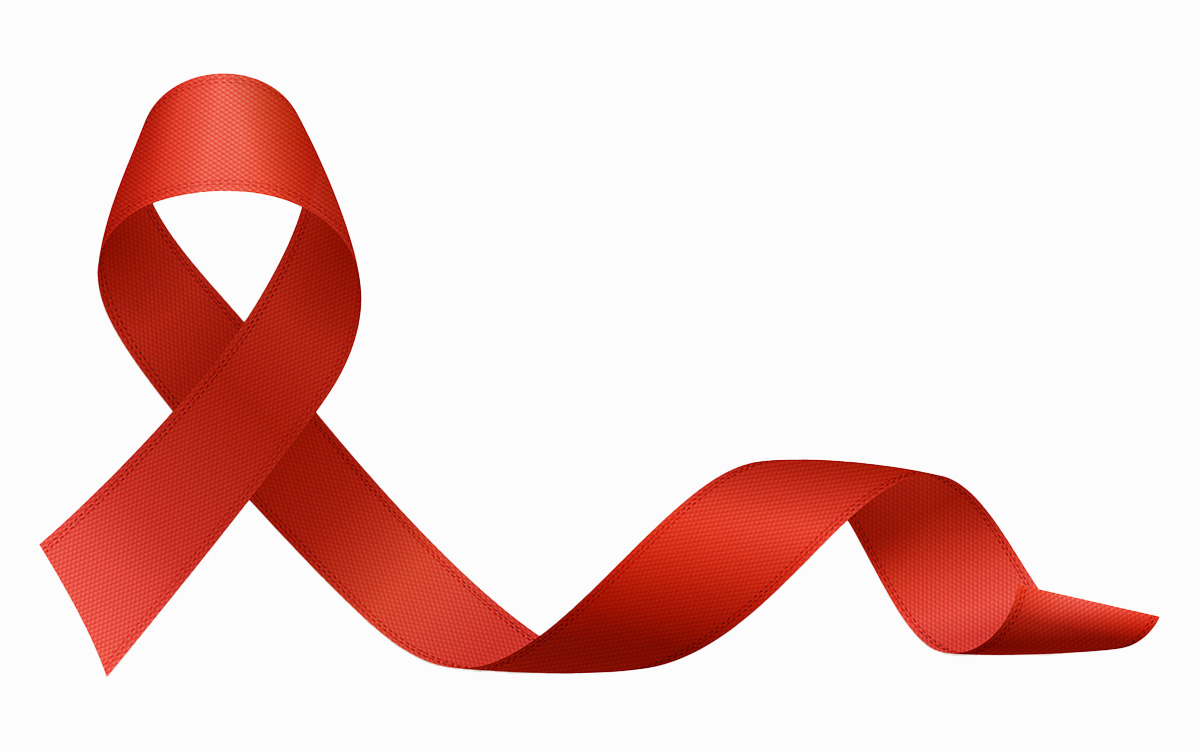
Philanthropic organizations on Wednesday announced two agreements with Indian pharmaceutical companies that will allow a breakthrough HIV prevention drug to become available in developing countries for $40 a year per patient.
The New York Times notes Unitaid, the Clinton Health Access Initiative, and Wits RHI reached an agreement with Dr. Reddy’s Laboratories to distribute lenacapavir. The Gates Foundation and Hetero brokered a separate deal.
Unitaid, the Clinton Health Access Initiative, Wits RHI, and the Gates Foundation announced their respective agreements against the backdrop of the U.N. General Assembly.
Lenacapavir users inject the drug twice a year.
UNAIDS in a press release notes lenacapavir in the U.S. currently costs $28,000 a year per person.
“This is a watershed moment,” said UNAIDS Executive Director Winnie Byanyima in a statement. “A price of USD 40 per person per year is a leap forward that will help to unlock the revolutionary potential of long-acting HIV medicines.”
The State Department earlier this month announced PEPFAR will distribute lenacapavir in countries with high HIV prevalence rates. A press release notes Gilead Sciences, which manufactures the drug, is “offering this product to PEPFAR and the Global Fund at cost and without profit.”

